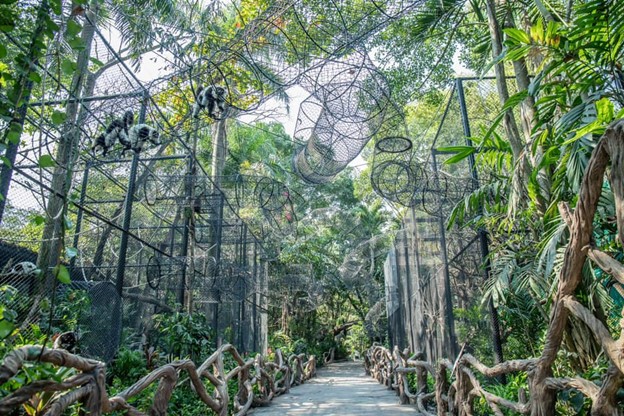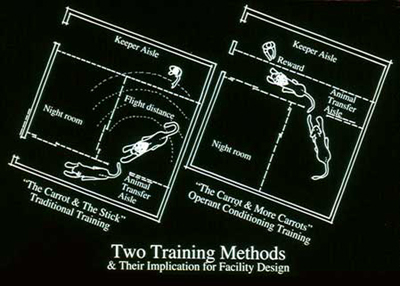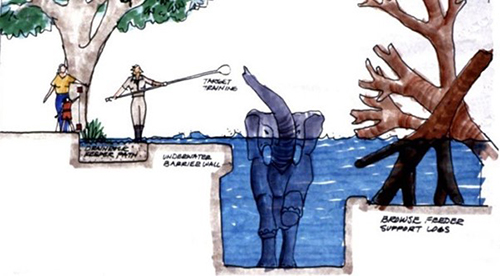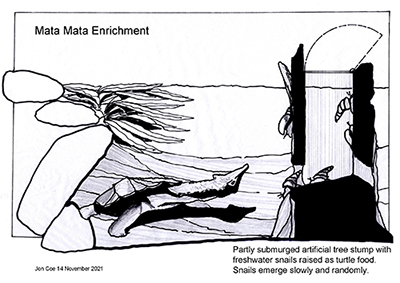Husbandry Animals
Animal caretakers search for ways to improve animal well-being, longevity and reproduction. Recent developments have major implications for exhibit and support facility design:
Captive Breeding

Spacious existing lemur enclosures with added compexity over public walkways. Safari World, Bangkok, Thailand. Design and photo by D. Nagel.
As zoos strive to become net producers (rather than consumers) of wildlife, more space is required for propagation and humane holding of surplus and off-display animals. Advances in materials and management also have caused these areas to become more complex and expensive to build and operate.
Behavioural Enrichment and Operant Conditioning
Behavioral enrichment provides animals opportunities for physical and behavioral stimulation and activities to counter stress and boredom.

Operant conditioning is a highly advanced and systematic form of reward-based training. It is inherently rewarding to the animals and greatly facilitates husbandry procedures.
Behavioral enrichment and operant conditioning are moving from specialist remedial practices to normal daily animal keeper activities, which have major implications for facility and management design.

Left is a design for traditional management, the animal transfer edoor is at the back of the holding area most distant from the keeper. Right: For operant conditioning management, the animal transfer door is by the front, or keeper’s side of the holding area.
Design for Animal Activity and Well-Being

Today designing for animal-wellbeing means not only naturalistic displays with space and activity motivators such as behavioral enrichment and training, but larger scale options, such as rotating animals through multiple displays. Poor physical fitness can impair health and reduce reproduction and longevity. Under-stimulation and boredom can be as damaging to well-being as over-stimulation. Having a diversity of appropriate behavioral choices is best in zoos, as it is in nature.
Behavioural Self Determination
“We have been training animals for thousands of years, and we almost never ask them to DO this! To bring their own abilities to the table. To think.” Karen Pyror May 1997

The organism with the most choices has the most “freedom”. How can we give animals themselves control over environmental and behavioral opportunities controlled today by their keeper? This is a promising challenge for both design and management…and it could revolutionize zoo design.
